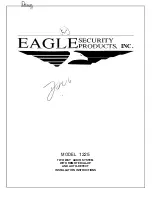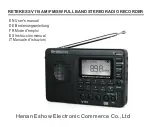
Document 1-0479-013 Rev B
30
12.0 USING AN EXTERNAL ANTENNA
In certain circumstances it may be desirable to extend the range of the AutoWAVE Transceiver by
using an external antenna in place of the standard whip antenna. The transceiver is equipped with
a non-standard external jack allowing the use of a directional Yagi or omnidirectional antenna.
When using an external antenna the whip antenna must be removed.
The use of an external antenna may radically improve the results obtained with AutoWAVE
transceivers. It is highly desirable to obtain line of sight with the antennas, and changes in
placement height of as few as a couple of feet may make the difference between no link and one that
is solid and reliable.
If external directional antennas are used FCC regulations concerning effective radiated power
limitations must be followed. Table 11 provides the maximum output power setting for a 1 watt
transceiver given antenna gain and cable loss combinations.
Cable Loss
1dB
2dB
3dB
4dB
Antenna
10dB
6
7
8
9
Gain
8dB
9
9
9
9
6dB
9
9
9
9
Table 11: Output Power Settings for Sample Antenna
Gain & Cable Loss Combinations
WARNING
Any antennas placed outdoors must be properly
grounded. Use extreme caution when installing
antennas and follow all instructions included
with the antennas.
The use of external antennas subjects the transceiver to greater exposure to direct lightning strikes.
Long RS-232 cable runs should also be avoided in areas with increased lightning activity or static
electricity unless they are properly isolated from the transceiver. Nearby lightning strikes or
elevated levels of static electricity may lead to voltage spikes on the line, causing failure in the
transceiver’s RS-232 interface.









































